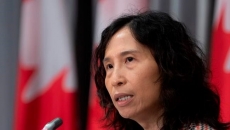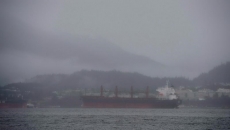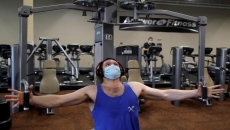NEW WESTMINSTER, BC – TransLink and the Mayors’ Council on Regional Transportation today released Transport 2050: 10-Year Priorities, detailing priority investments to meet the increasing demand for transit and support the transportation needs of Metro Vancouver’s growing population.
The proposed 10-Year Priorities is the next step to implement the ambitious goals and targets set out in Transport 2050, Metro Vancouver’s recently approved 30-year Regional Transportation Strategy.
Proposed investments detailed in the 10-Year Priorities include:
- Doubling regional bus service levels
- Up to 170 kilometres of new rapid transit on up to 11 corridors, including:
- Up to nine Bus Rapid Transit (BRT) routes using new zero-emission buses on dedicated, traffic-separated lanes
- A rapid transit connection to the North Shore
- The Burnaby Mountain Gondola to SFU
- The Millennium Line SkyTrain extension from Arbutus to UBC
- Exploring other potential SkyTrain extensions, including Newton in Surrey and Port Coquitlam
- Building 450 kilometres of new traffic-separated cycling paths
WATCH: @translink announces Transport 2050: 10-Year Prioritieshttps://t.co/kwIu7ur9IO
— News from TransLink (@TransLinkNews) April 20, 2022
The Transport 2050 Strategy concluded that there is an urgent and widespread need to address climate change, housing affordability, and traffic congestion by increasing and improving transit service as quickly and cost-effectively as possible.
With Transport 2050: 10-Year Priorities, TransLink is proposing an expansion of the SkyTrain network, an unprecedented increase in local bus service, and introducing high-capacity Bus Rapid Transit. This new zero-emissions bus-based rapid transit could be deployed along high-demand corridors throughout Metro Vancouver at a fraction of the cost and time compared to rail-based technology. See the Bus Rapid Transit backgrounder for more details.
In addition to Transport 2050: 10-Year Priorities, TransLink is also releasing the 2022 Investment Plan, which aims to stabilize funding over the next three years.
TransLink is accepting comments from the public on both the 2022 Investment Plan and Transport 2050: 10-Year Priorities starting today. Visit translink.ca/priorities to take the survey until May 4, 2022.
Transport 2050: 10-Year Priorities Facts:
Transport 2050: 10-Year Priorities is a blueprint that identifies our region’s top priorities, so we can get started right away on the first ten years of Transport 2050 investments, which will be funded through future Investment Plans. It is an update to the Mayors’ Council’s 2014 Vision for Metro Vancouver Transit and Transportation.
The proposal includes:
- The fast deployment of rapid transit: up to nine new traffic-separated Bus Rapid Transit lines
- More than doubling bus service over 2022 levels, bringing us one-third of the way to the service levels set out in Transport 2050
- Building the Burnaby Mountain Gondola to Simon Fraser University, joining a growing suite of urban public transit gondolas worldwide
- Immediately advance the required planning, engagement, and design work to confirm the best alignment, technology, grade separation, terminus locations and phasing for a rapid transit connection between Metrotown and Park Royal via the Second Narrows corridor to be implemented in the latter half of the plan, while delivering better bus service in the short term
- The Millennium Line SkyTrain extension from Arbutus Street to the University of British Columbia, pending the development of a new funding model with project partners
- Investing in active transport: completing 75 per cent of the 850-kilometre traffic-separated Major Bikeway Network and building bike networks in every Urban Centre and creating 200 new bike lockers and six new bike parkades
- A 60 per cent increase to HandyDART service to meet future ridership demand and provide 24-hour service
- Increasing SeaBus service start and end times to match Expo Line SkyTrain service span






